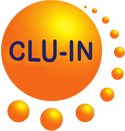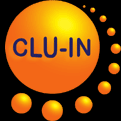Search Result
ENGINEERED IN SITU BIOGEOCHEMICAL TRANSFORMATION AS A SECONDARY TREATMENT FOLLOWING ISCO - A FIELD TEST
Nemecek, J., M. Nechanicka, R. Spanek, F. Eichler, J. Zeman, and M. Cerník.
Chemosphere 237:124460(2019)
Filed Under: Demonstrations
Filed Under: Demonstrations
In this field study, in situ biogeochemical transformation was used as a secondary treatment to reduce sulfate created during in situ chemical oxidation (ISCO) and produce iron sulfides to abiotically degrade chlorinated ethenes. Hydrochemical and molecular tools, solid-phase analysis, and geochemical modeling were used to assess the method. Following a neutralization and bioaugmentation, favorable conditions for iron- and sulfate-reducers were created, resulting in an increase in their relative abundance. The abundance of dechlorinating bacteria (Dehalococcoides mccartyi, Dehalobacter sp. and Desulfitobacterium spp.) remained low throughout the process. The activity of iron- and sulfate-reducers was further stimulated through application of magnetite plus starch and microiron plus starch, resulting in an increase in ferrous iron concentration (from <limit of quantification [LOQ)] to 337 mg/l), a decrease in sulfate concentration by 74-95% and production of hydrogen sulfide (from <LOQ to 25.9 mg/l). At the same time, a gradual revival of dechlorinators and an increase in ethene concentration was observed. Tetrachloroethene and TCE concentrations decreased by 98.5-99.98% and 75.4-98.5%, respectively. A decline in chlorine number indicated that biological dechlorination contributed to CVOC removal.
Chemosphere 237:124460(2019)
Filed Under: Demonstrations
Filed Under: Demonstrations
In this field study, in situ biogeochemical transformation was used as a secondary treatment to reduce sulfate created during in situ chemical oxidation (ISCO) and produce iron sulfides to abiotically degrade chlorinated ethenes. Hydrochemical and molecular tools, solid-phase analysis, and geochemical modeling were used to assess the method. Following a neutralization and bioaugmentation, favorable conditions for iron- and sulfate-reducers were created, resulting in an increase in their relative abundance. The abundance of dechlorinating bacteria (Dehalococcoides mccartyi, Dehalobacter sp. and Desulfitobacterium spp.) remained low throughout the process. The activity of iron- and sulfate-reducers was further stimulated through application of magnetite plus starch and microiron plus starch, resulting in an increase in ferrous iron concentration (from <limit of quantification [LOQ)] to 337 mg/l), a decrease in sulfate concentration by 74-95% and production of hydrogen sulfide (from <LOQ to 25.9 mg/l). At the same time, a gradual revival of dechlorinators and an increase in ethene concentration was observed. Tetrachloroethene and TCE concentrations decreased by 98.5-99.98% and 75.4-98.5%, respectively. A decline in chlorine number indicated that biological dechlorination contributed to CVOC removal.
The Technology Innovation News Survey welcomes your comments and
suggestions, as well as information about errors for correction. Please
contact Michael Adam of the U.S. EPA Office of Superfund Remediation
and Technology Innovation at adam.michael@epa.gov or (703) 603-9915
with any comments, suggestions, or corrections.
Mention of non-EPA documents, presentations, or papers does not constitute a U.S. EPA endorsement of their contents, only an acknowledgment that they exist and may be relevant to the Technology Innovation News Survey audience.





